Do you introduce letter names or sounds first?
This is a widely debated topic. A lot of research suggests that the teaching of single letter sounds are far more important than the ‘names’ of the letters when it comes to phonics and reading. Therefore, you should teach the sounds letters make first and then teach the names of the letters. A lot of teachers find this works for them. However, I have always taught both letter names and the sounds they make simultaneously.
Of course, you do what you believe is the best for your students. Exposing students to both the names of the letters and the sounds they make at the same time is my preferred approach.
A cute idea is to introduce the concept using animals. Animals are all called different things, but they make different sounds. For example, the name of the animal is a cow, and the sound it makes is ‘mooo’. This gives them a way to understand that letters have names and in their singular form they make different sounds.
We have so many fantastic resources that you can use in your classroom to expose your students to the letters of the alphabet and their sounds!
This gorgeous set of Initial Letter Bingo Cards are perfect for a small group or whole class activity.
What order do you teach letter names and sounds?
In my classroom, I taught the letters and sounds out of order.
Some phonics programs outline the order to teach the single sounds, often introducing a few simple diagraph sounds early on. For those that may not have a phonics program to go by, I like this order of introducing single letters and sounds:
a, m, t, p, o, n, c, d, u, s, g, h, i, f, b, l, e, r, w, k, x, v, y, z, j, q
- Letters that occur frequently in words are taught first.
- Letters that look similar and have similar sounds (b and d) are separated in the instructional sequence to avoid confusion.
I would normally focus on one letter and sound a week. However, during this explicit teaching, it is still important to expose your students to other letters of the alphabet. Both uppercase and lowercase letters.
By displaying these gorgeous Alphabet Charts in your classroom, you will be continually exposing and immersing your students in the alphabet.
School Fonts vs Other Fonts
Yes, school fonts are important and many early years teachers get caught up with ensuring everything in the classroom uses the correct school font. Consistency is important when teaching phonics, however, exposing children to a variety of fonts and the way letters can look is just as important!
Not all books are going to use your school fonts, therefore, it is important for your students to know that sometimes the ‘a’ will look a little different but will still make the same sound!
Of course, where we can, we create teaching resources in most school fonts to give you the option to download using your chosen font.
This Alphabet Book – Letter Worksheets is a fantastic resource to use in the classroom when teaching students how to identify and name the letters of the alphabet and the most common sound they represent.
Hands-on Alphabet Classroom Activities
Incorporating a variety of hands-on activities into the classroom is crucial to your students’ knowledge of the name of letters and the sounds they make. Immerse your students in alphabet land! Students need to be exposed to the letters and sounds as much as possible.
Your students will be begging to learn about letters and sounds with our fun, super cute, alphabet resources.
Alphabet Detective – Fingerprint Art
This is one of my most favourite alphabet activity ideas! Don’t be scared, it looks a little messy, but I can see this being an easy process in the classroom.
I would only be introducing a letter a week. So it would be the routine!
- Introduce the letter/sound of the week.
- As a class, decide what picture you are going to create with a fingerprint for that letter.
- While doing other activities relating to that sound, have a small group table set up to do the fingerprinting!
What a fantastic way to revise the letters and sounds already taught! Once complete, you can laminate the strip and stick it to students desk as a daily reminder! Download the teaching resource template today – Alphabet Detective Fingerprint History.
Alphabet Playdough Mats
Kids love using playdough and it is such a tactile activity. Check out our Alphabet Playdough Mats for fine motor development and letter recognition. Both lowercase and uppercase have been used on these playdough mats.
This is another debate; do you introduce both lower case and upper case? Again, there are arguments for both sides. In my classroom, I introduced both at the same time! I found this less confusing for the students when looking for letters in books and signs.
Alphabet Cards – Activity Ideas
Download and laminate our Alphabet and Picture Cards. This resource is a simple resource that keeps on giving! There are so many fantastic ways to utilise them in the classroom.
Letter Swatting Game
Using a fly swat, or students can use their hands, place ten pictures on the floor with the matching letters in a pile beside the pictures. Students take turns to turn over a letter. They must say the letter that is on the card, then swat the picture that starts with that letter.
Memory
Choose five to ten pictures and matching letters. Place each card face down. In pairs, students take turns to flip over two cards. Once they turn over a matching picture and letter, they get to keep these cards. The student with the most cards wins!
Sorting
In small groups, give the students the picture cards, uppercase letter cards and lowercase letter cards. Students need to match the correct uppercase, lowercase and picture cards.
Alphabetical Order
Provide each student with the uppercase letters and lowercase letters cards. Have students place the cards in alphabetical order.
Scavenger Hunt
Give each student a letter from the uppercase or lowercase cards. Students need to find as many things that start with that letter. They can look in books, around the classroom or even go exploring outside!
Train Line
Give each student a picture card and lowercase card (they do not have to match). The aim of this activity is for students to create a ‘train line’. The student that has the letter ‘a’ starts by placing down the card. The student who has the picture that starts with the letter ‘a’ then places their card down. The process continues until all of the cards have been placed down in a long line.
Alphabet Matching Caterpillar Activity
This is a gorgeous vibrant and fun activity that can be done independently or in a small group to help consolidate your students’ knowledge of uppercase and lowercase letters.
This resource is available to download in most school fonts! Check it out today, Alphabet Matching Caterpillar Activity.
Recognising Uppercase and Lowercase Letters on a Keyboard
This activity is a great one to do with your high achieving students, or even after all letters have been introduced. A great visual activity where students find the hidden letters on and around the keyboard, they then add the missing letters to a series of simple descriptions.
Download this pack of 26 uppercase and lowercase worksheets.
For more classroom activities and teaching resources for the alphabet, check out our Alphabet Teaching Resources collection.



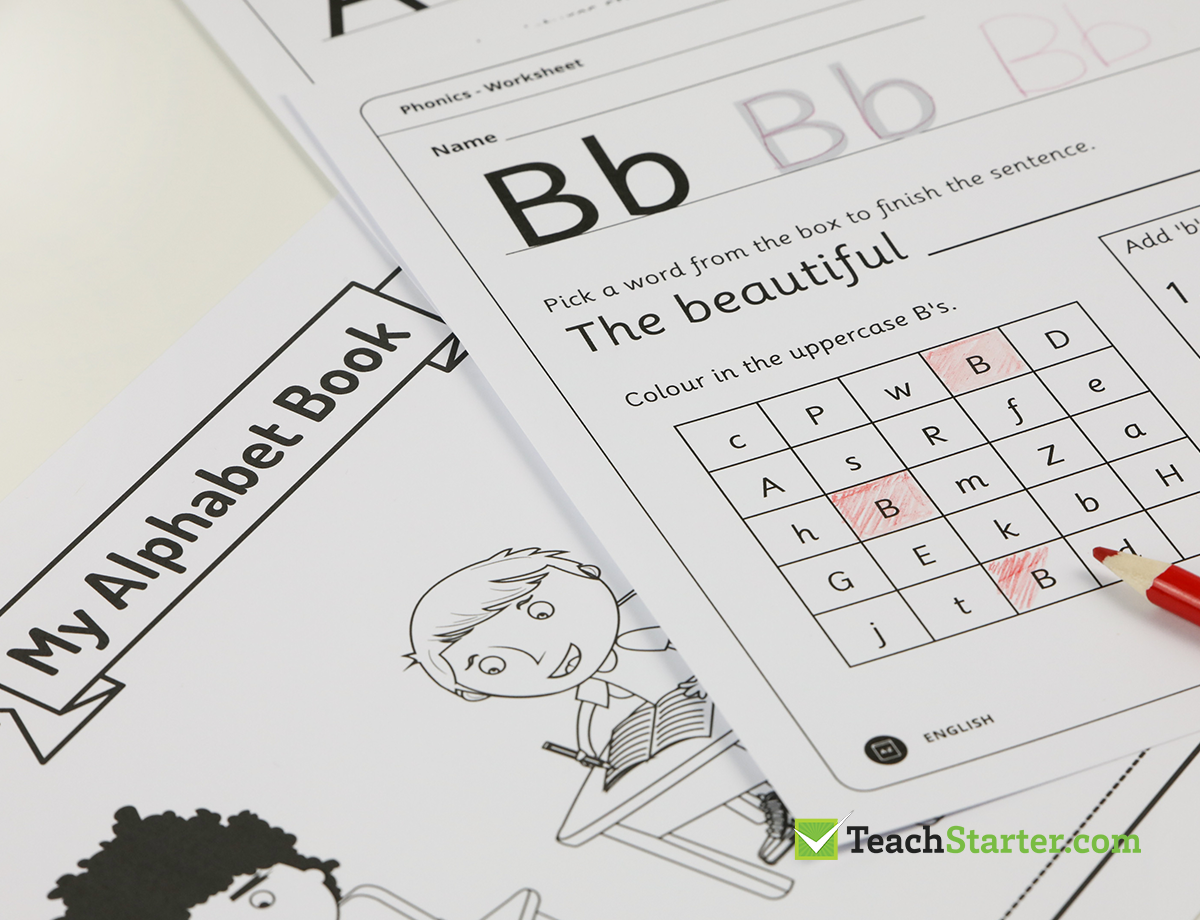
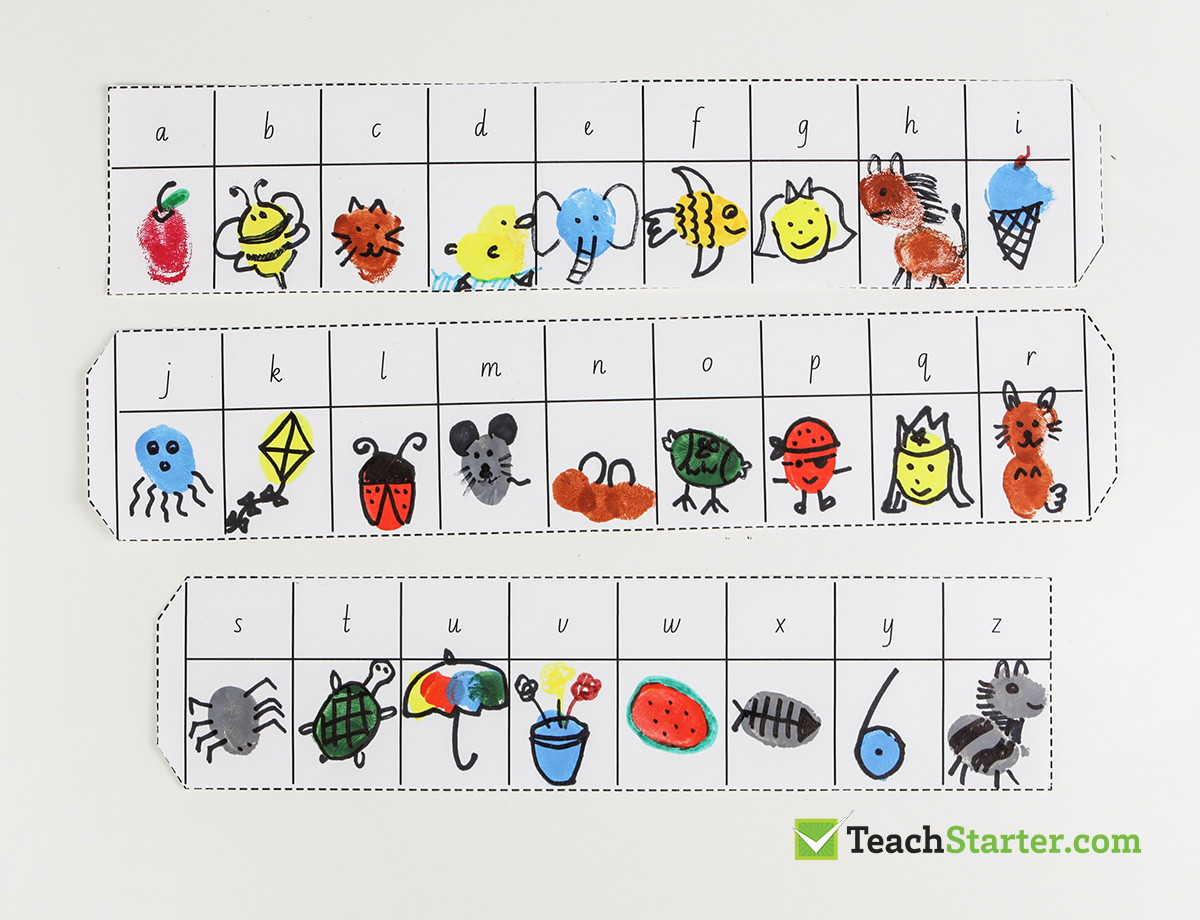
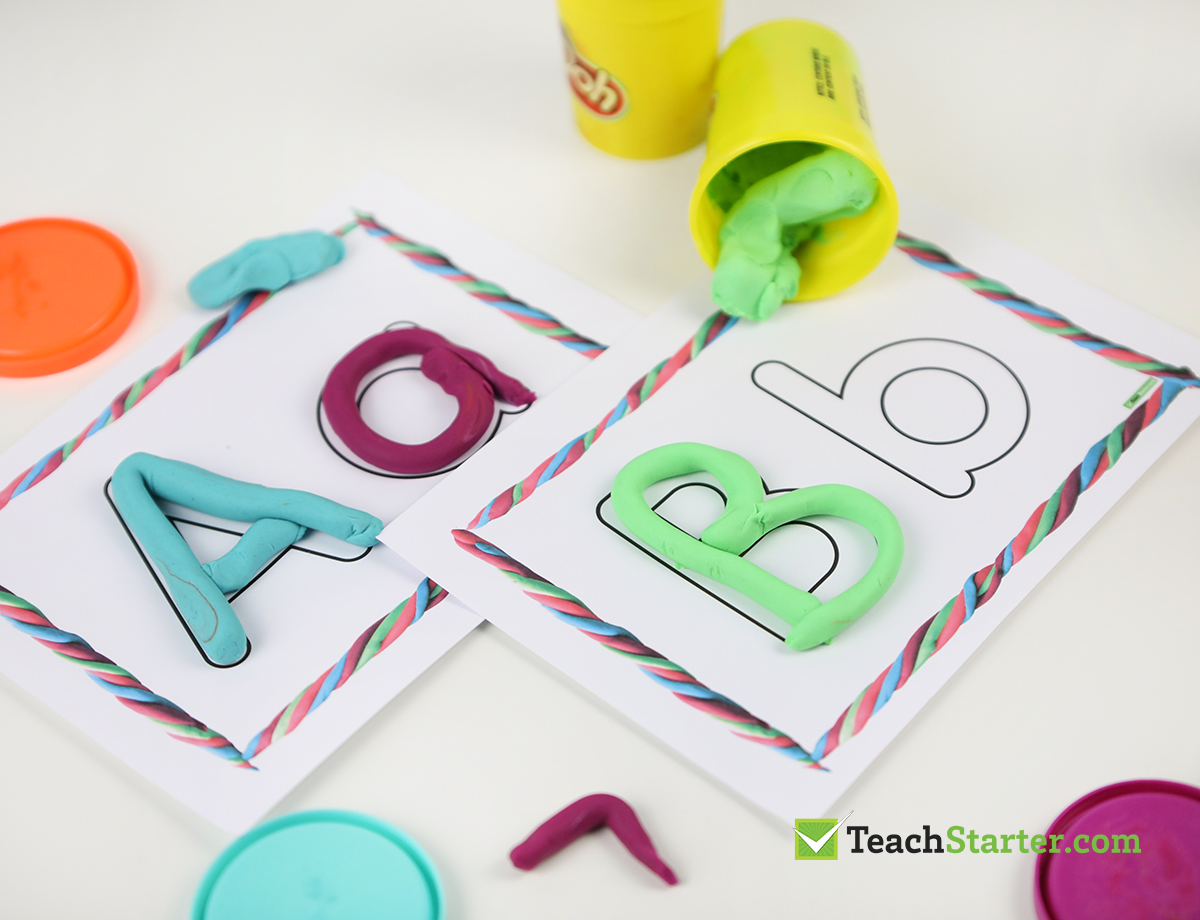
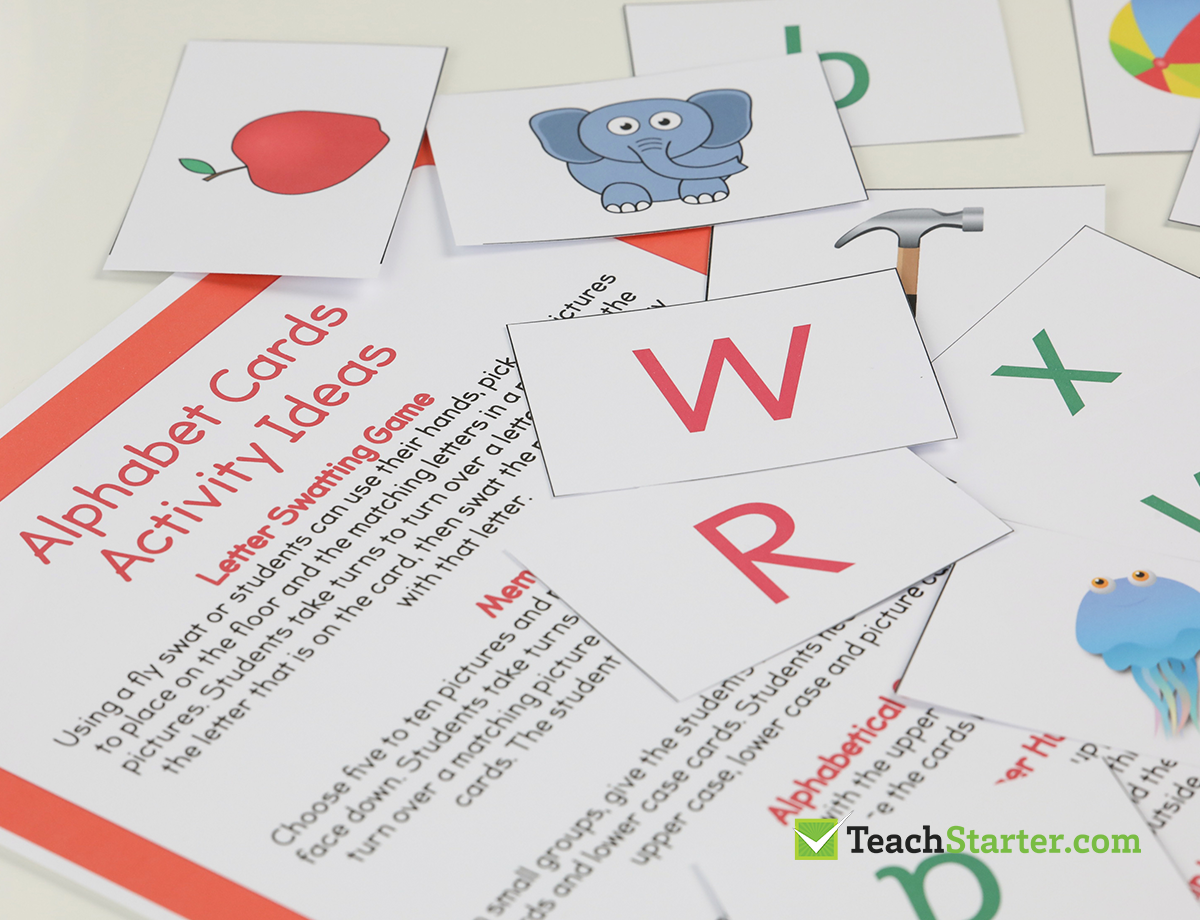
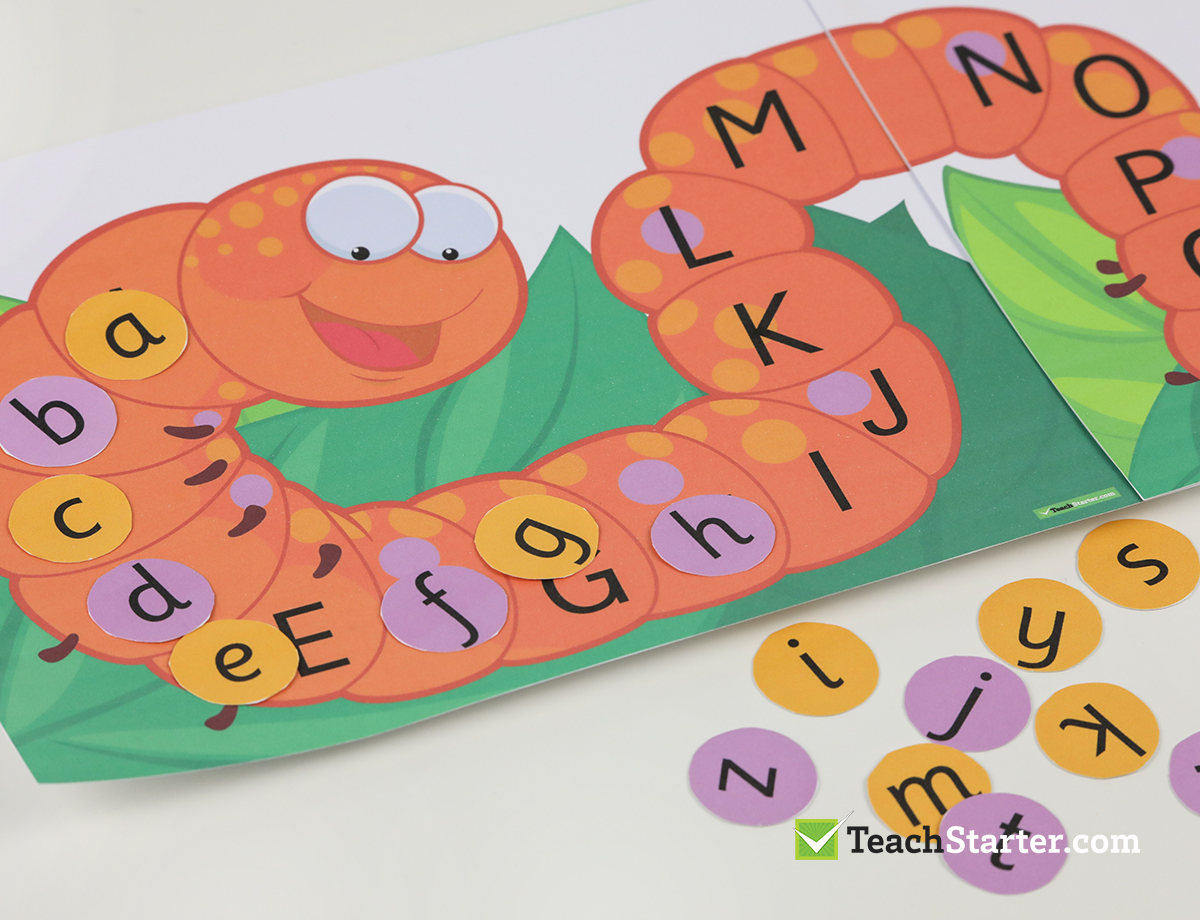
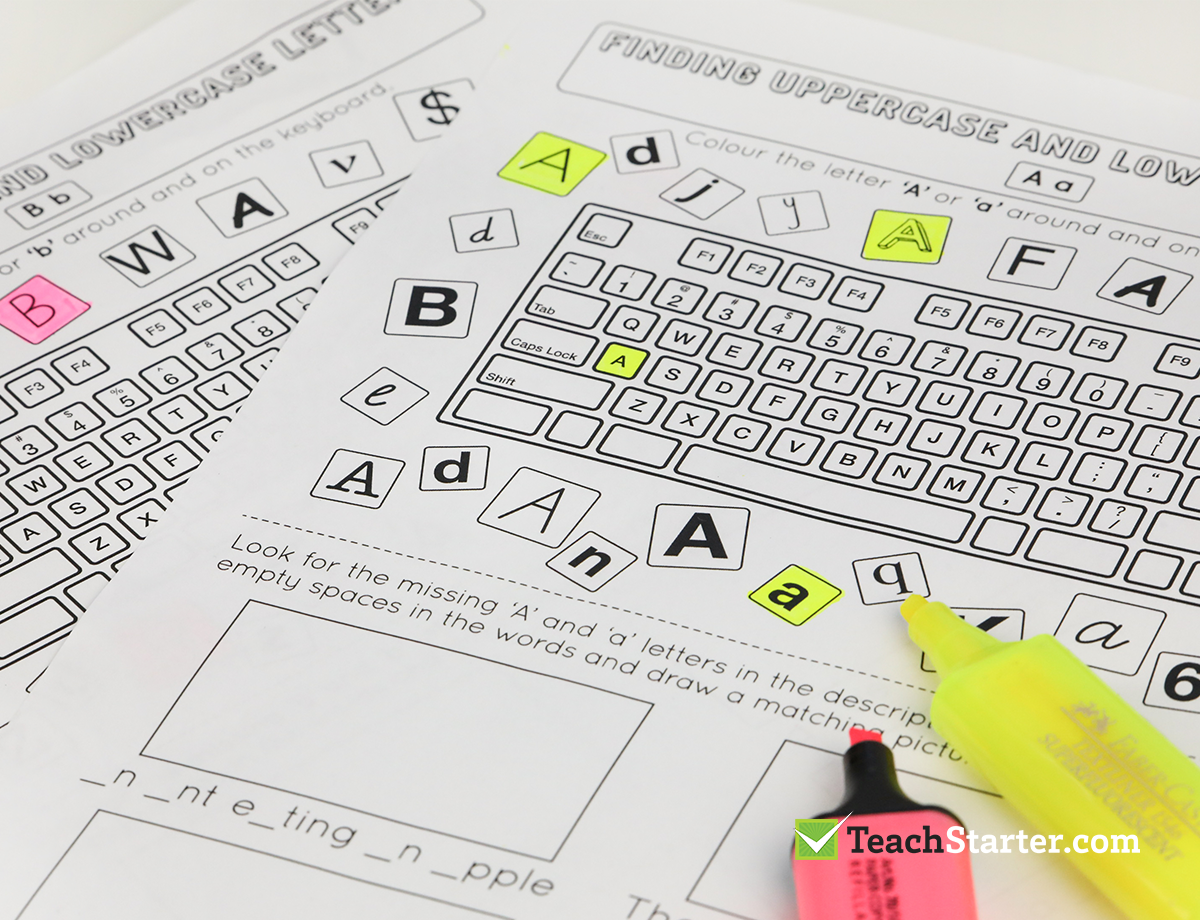






I agree, some fantastic resources, Thanks. Olle :)
Thanks for your kind feedback Olle!
Great, creative resources to help me with some consolidation and small group work. Thank you.
Thanks for your kinds words, Zuriette! So glad this list of resources will help you in the classroom.